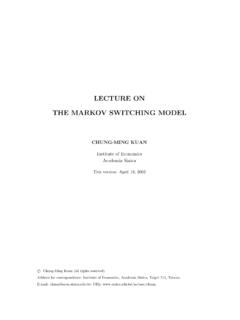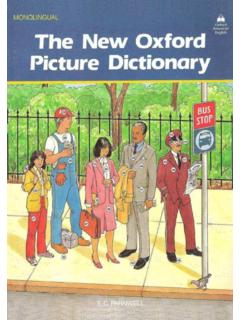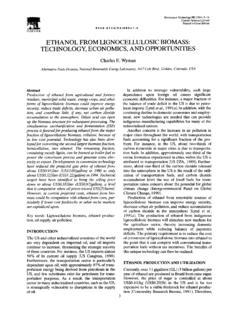Transcription of MODERN THEORIES OF SOCIAL STRATIFICATION
1 MODERN THEORIES OF SOCIAL STRATIFICATION Shown relaxing at home in a picture taken by his wife, C. Wright Mills was ahead of his time in explaining how America's political and economic institutions allowed for a power elite to increasingly be able to dominate the nation and world. CHAPTER OUTLINE VIEWS OF SOCIAL STRATIFICATION IN AMERICA: EARLY YEARS FUNCTIONAL THEORIES OF SOCIAL STRATIFICATION CONFLICT THEORIES OF SOCIAL STRATIFICATION THE BASES OF CLASS STRATIFICATION AND CLASS LOCATION THEORIES OF SOCIAL STRATIFICATION : A CONCLUSION SUMMARY NOTE CHAPTER FIVE: MODERN THEORIES OF SOCIAL STRATIFICATION 1 15 VIEWS OF SOCIAL STRATIFICATION IN AMERICA: EARLY YEARS Though today most sociologists consider SOCIAL STRATIFICATION one of the most impor- tant areas of study, this has not always been the case.
2 In fact, the importance of this subject in understanding society and human behavior has been widely recognized by American sociologists only in the past fifty years, at most. The contrast to European SOCIAL thought is clear. As we noted in the previous chapter, Marx, Weber, and even those before them such as Comte and Saint-Simon began their studies of society with the nature of class divisions and inequality as central questions (see Strasser 1976). What accounts for this contrast to American sociology? Our answer to this question can, in part, help us understand the state of STRATIFICATION theory today. Sociology as a separate discipline of study in the United States dates back only to about the early 1900s.
3 But in the works of the founders of American sociology (men such as William Graham Surnner, Albion Small, and Edward Ross), we find a rather classless view of American society (Pease, Form, and Huber 1970; for a summary of these works see Gordon 1963; Page 1969). The relative neglect of SOCIAL STRATIFICATION is not surprising, however. Unlike in European nations, the old rigid class and estate inequalities were less in evidence. The value system stressed equality of opportunity for all, and at least an appearance of opportunity and democracy was in greater evi- dence. Not until the Great Depression of the 1930s was this classless image seriously reexamined, and then only by a few SOCIAL scientists.
4 Even then, many years passed before the study of SOCIAL STRATIFICATION was able to make a significant break with American classless mythology. The first detailed American study in SOCIAL STRATIFICATION appeared in 1929 with Robert and Helen Lynd's Middletown, followed later by Middletown in Transition (1937). This first work was to establish a long tradition of STRATIFICATION studies of small community life in the United States. But the general conflict perspective of this study was only much later a part of this tradition. The Lynds' focus was on power and economic inequalities, and the overpowering image of equality of opportunity in American society was exposed as a myth (see Gordon 1963:66).
5 With the depression over, their view of American society was placed on the shelf and all but forgotten. Of the SOCIAL STRATIFICATION research stimulated by the Great Depression, Lloyd Warner's work (in the 1930s and 1940s) had the most significant impact, at least for the next twenty to thirty years. Like the Lynds' research, Warner's many-volume Yankee City study (as well as others by his students) was centered on SOCIAL STRATIFICATION in small communities. Using various methods of study, from survey research to detailed participant observation, these works sought to examine the extent of inequality and so- cial mobility, as well as the meaning of SOCIAL STRATIFICATION for the people involved.
6 But the Warner school differed from the Lynd tradition in three important ways. Most importantly, the Warner school came to define SOCIAL STRATIFICATION in terms of status (Weber's second dimension of SOCIAL STRATIFICATION ). As Warner (and Lunt 1941:82) wrote: "By class is meant two or more orders of people who are believed to be, and are accordingly ranked by the members of the community, in superior and in- ferior positions." With such a view, inequalities of power and economic dominance were easily ignored, and the dynamics of conflict related to these STRATIFICATION dimen- sions were dismissed. 1 16 PART TWO: EXPLANATIONS OF SOCIAL STRATIFICATION : STRATIFICATION THEORIES Secondly, the Warner school failed to examine the actual extent of equality of op- portunity critically.
7 In the face of contrary experience highlighted by the depression, this research tradition continued to stress a "reality" of SOCIAL mobility for all who had the talent and ambition to succeed, a finding now disputed in a reanalysis of Yankee City (Thernstrom 1964). Finally, we find in the Warner school an emphasis on SOCIAL STRATIFICATION as func- tional and necessary for complex societies like our own. The conflict, the structured and hereditary nature of inequalities, the harsh conditions for workers, and the exten- sive poverty all too often found in the expansion of American capitalism w&e all but ignored. The primary points are these: 1. During the earliest stage of American sociology the subject of SOCIAL stratifica- tion was generally ignored.
8 With very few exceptions, such as in the work of Thorstein Veblen, it was as if "nasty" conditions of class conflict, hereditary wealth, gnd race and class exploitation did not exist in the "classless" American society. 2. It took the experience of this country's most severe economic crisis to bring many SOCIAL scientists to face the reality of rigid class inequalities. But even when this happened, the sobering reality forced upon us by this economic crisis was for most so- cial scientists short-lived. 3. When the study of SOCIAL STRATIFICATION was increasingly taken up by American SOCIAL scientists, the more palatable subject of status inequality dominated their work.
9 The praise of America as the most classless of all industrial societies would continue for some time. All of the preceding would be worthy of no more than a short footnote in the his- tory of American sociology were it not for the fact that this tradition of STRATIFICATION research remains to a large degree. As we will see, conflict perspectives have only re- cently become more widely respected by academic SOCIAL scientists as a counter to the limited view of functional THEORIES of SOCIAL STRATIFICATION . Research continues to be dominated by mobility studies that focus attention on individual characteristics rather than the structured and rigid inequalities of wealth and power (see Huber and Form 1973:36).
10 Our research on poverty, for example, is still struggling to escape the "cul- ture of poverty" perspective that focuses attention on characteristics of the poor (or what is wrong with the poor), rather than directing our attention to the wider stratifica- tion system that helps maintain poverty (Kerbo 1981a). However, a tradition of STRATIFICATION theory and research was at least begun. The Warner school stimulated many students, and there was soon a wide variety of re- search on subjects such as differing class values and lifestyles, occupational prestige (if not occupational power), and the degree and causes of SOCIAL mobility (Pease, Form, and Huber 1970).
















